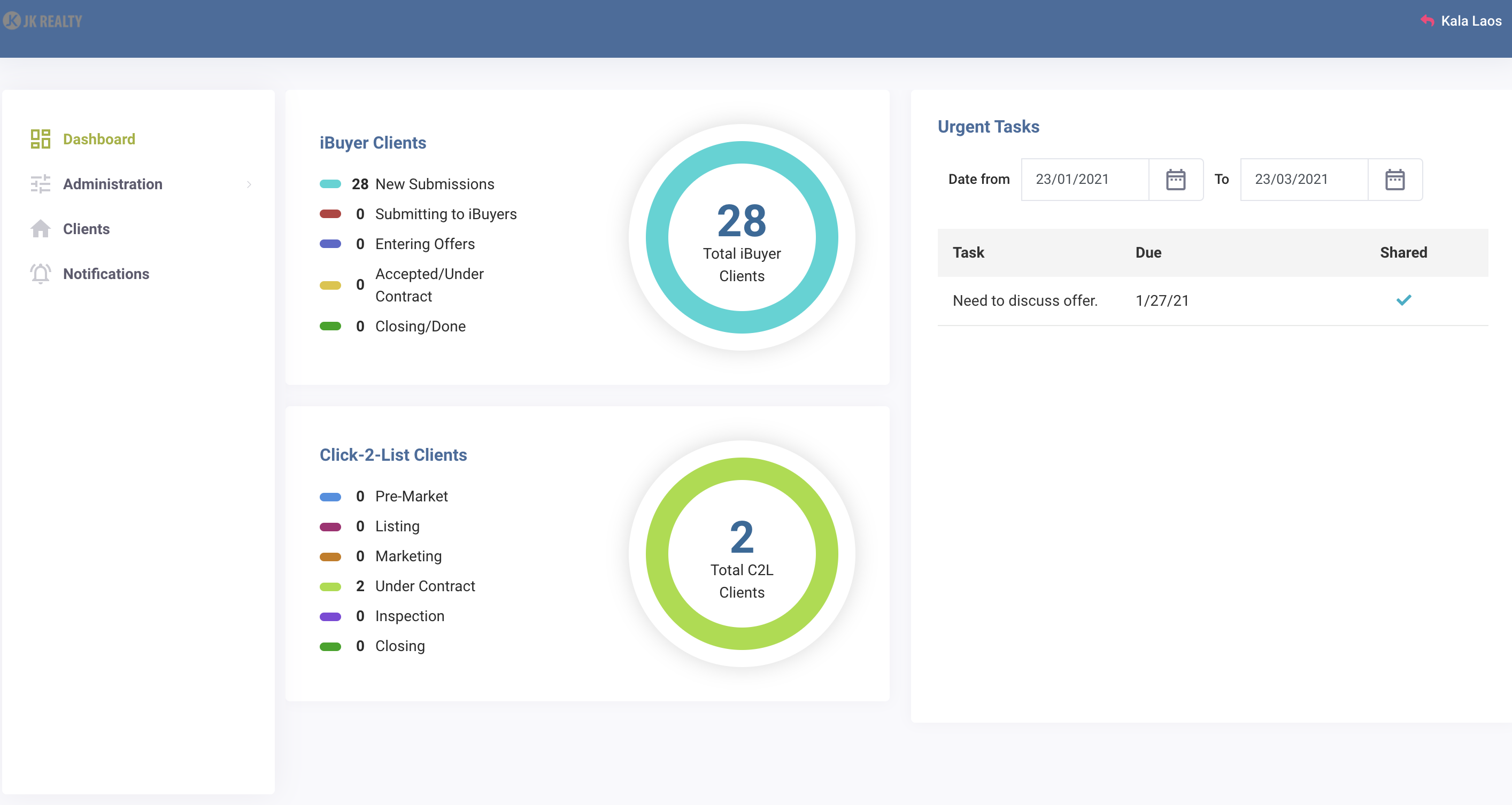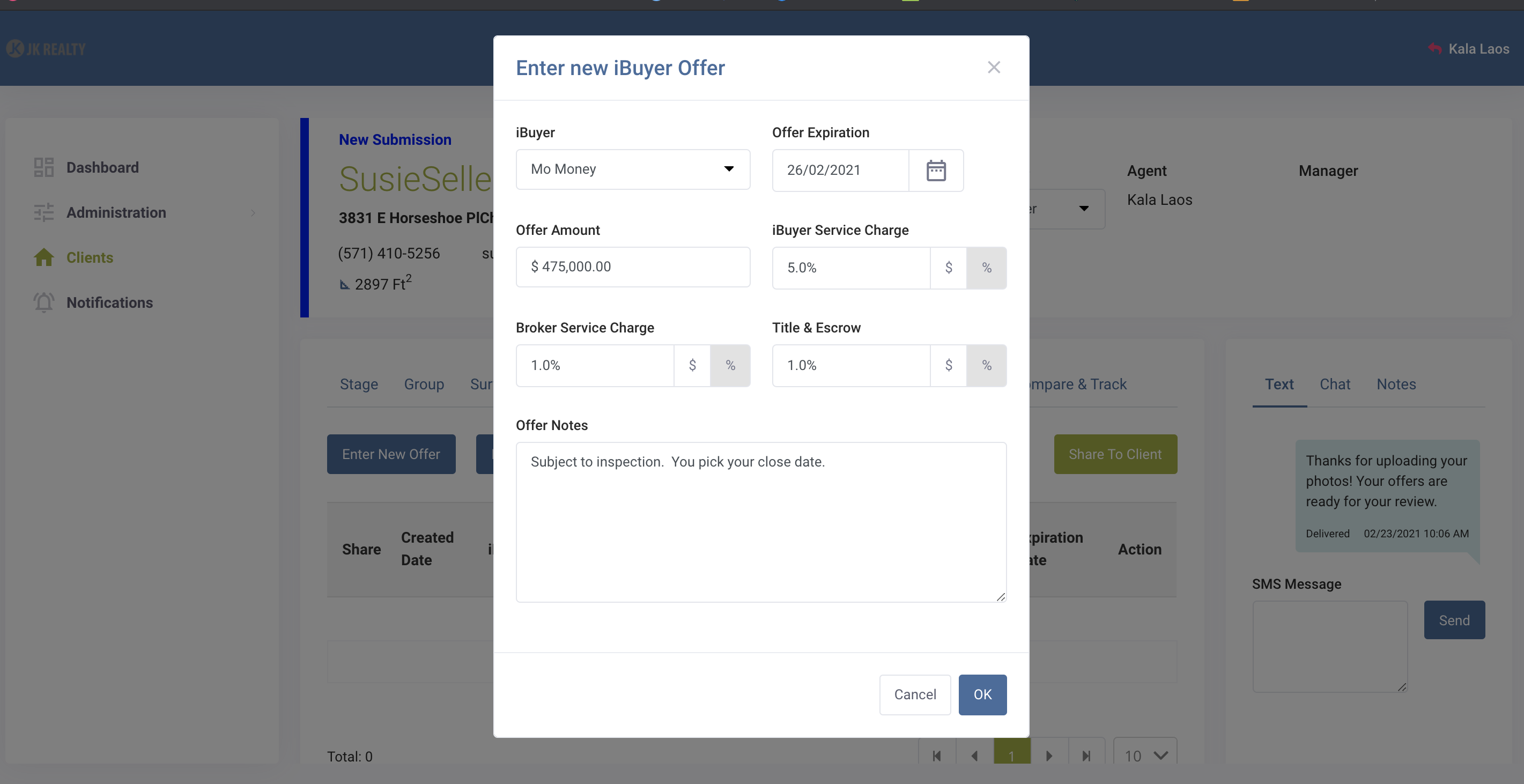Zoodealio’s features and offer comparison tools make every agent an iBuyer in the name of getting more listing business.
Have suggestions for products that you’d like to see reviewed by our real estate technology expert? Email Craig Rowe.
Zoodealio is a seller lead generation solution.
Platforms: Web, mobile responsive
Ideal for: Listing agents, teams, brokers
Top selling points:
- Unique model for listing leads
- Uses iBuyer calls to action
- Lead-routing
- Compares multiple offer types
- Very sharp, engaging user interface
- Consumer-facing “cash offer” website
Top concern:
While the initial engagement tactic, the cash offer website, is branded to the agent, it also stands as a sneaky marketing tool for Zoodealio’s range of products an agent can offer, which might confuse the consumer as to what they’re “getting into.” I’d inquire about limiting the content on this page.
What you should know
Zoodealio is a cocktail of every company trying to upset the real estate market today. Opendoor. Knock. Offerpad.
But unlike a lot of them, the company is strictly about keeping the agent front and center. In fact, while Zoodealio does in some instances buy a seller’s home, the software’s experience is clearly developed around the agent.

It all starts with a prospective client being sent to an agent’s “iBuyer” landing page. This mini website outlines the process, but not without pitching Zoodealio’s Home Trade-in program, essentially a “buy before you sell” model, emulating Knock.
There’s also a “Become a Cash Buyer” product, which empowers Zoodealio to buy the home on behalf of a buyer, allowing for noncontinent and more competitive offers.
However, Zoodealio keeps its agents in the loop by hiring them to list the homes it buys. Thus, you get commissions on both ends of the transaction.
Consumers are double-authenticated before they go about the iBuying process, a simple but multi-step workflow similar to the industry’s top players. They upload images, complete some forms about home features and provide ample data to generate an offer.
The property dashboard welcomes sellers and provides the intake experience for the client. Sellers can request a meeting with an agent, view a typical sale timeline, and are eventually provided with a market report on sold and active comps.
The agent backend is more robust, and what you might expect to see in a CRM or online marketing software. It’s an engaging, chart-driven look into leads that have requested cash offers or submitted their home’s data, and a breakdown of those who didn’t like the cash offer and chose instead to list directly with you, the agent.

Teams and brokers can benefit from the lead routing features and the general structure of the data serves as a nice look into potential gross commission income (GCI).
The click-to-list module also helps agents keep track of deal progress, from pre-market to closing. This I find to be a bit too much, as most brokerages are going to already be heavily invested in deal performance oversight. While it doesn’t take away from Zoodealio’s core competency, I don’t find this information particularly useful in this context.
You can create and manage tasks, too. Ideally, this feature set will be relegated to Zoodealio leads and related follow-up.
But what I do really like is the lead details screens. Every person who’s come to you through the site gets a robust breakdown of where they may stand as a client and everything about their listing submission.

This is also where you see the offer Zoodealio has made on the client’s home. It’s there within 24 hours of their request.
Agents can choose to share the Zoodealio cash offer right away or send it along with their expected list price with estimated commission and closing costs for a direct comparison.
Zoodealio’s “Enter New iBuyer Offer” then expands the offer options by creating potential deals from other popular iBuyer platforms, Opendoor being the most obvious.
When the seller is alerted to offers and logs in, they see a very cool — dare I say, fun — breakdown of each offer, including the agent’s open market proposal.
Each offer is detailed in an illustrated graphic depicting the seller’s final cash-at-close number, with the highest and best embellished by a “More Money!” banner. I dig it — it’s a simple, nonthreatening way to present emotional data to a homeseller.

The seller can choose to List My Home with the agent or accept the competing iBuyer offers, which can be viewed in greater detail if desired. There’s also a very detailed narrative explanation of why iBuyer offers are often lower, with metrics to back up the value of going with the open market. So again, Zoodealio is always looking out for the agent.
A couple things to consider with Zoodealio. I see it as a supplemental lead source, as a lot of sellers out there remain highly unfamiliar with iBuyers and may view the entire process as sketchy. Thus, there simply isn’t a need to introduce the concept.
I also worry a little about getting these leads back and forth from your primary CRM. They may be able to create a Zapier connection.
That said, I think Zoodealio’s cash offer landing page could be a very good way to possibly wake dormant contacts. Push it in a newsletter or on social. It would make a great link for business card QR codes, too.
Relative to costs: Zoodealio charges sellers 5 percent on iBuyer deals, and there’s no charge to agents if they get the listing.
This is a certainly a long way to go for a listing lead, and I would imagine it’s best for warm leads, those folks you’ve chatted with a few times who may not be ready yet or deciding between a couple of agents.
Overall, if your team or brokerage is getting a lot of questions about iBuyers from your clients, this may be your best answer.
Have a technology product you would like to discuss? Email Craig Rowe
Craig C. Rowe started in commercial real estate at the dawn of the dot-com boom, helping an array of commercial real estate companies fortify their online presence and analyze internal software decisions. He now helps agents with technology decisions and marketing through reviewing software and tech for Inman.
















Comments